Sinking Groundline
WHAT IS SINKING GROUNDLINE?
Groundline is the rope that runs along the length of a string or fleet of pots (also known as creels), each of which are attached to the rope via a leg rope. While it has been assumed that groundline lies on the seabed, in the majority of pot fisheries where buoyant rope is used, the groundline rises to form arches or loops in the water column between pots. Some of these can be several metres high and are a significant risk factor in marine megafauna entanglements. An analysis by the Scottish Entanglement Alliance (SEA) of a 10-year dataset from Scottish waters found that where the cause of the entanglement was known, groundlines were responsible for 83% of minke entanglements, 50% of those involving humpback whales, and 76% of those involving basking sharks. Buoyant polypropylene rope is typically used in Scottish creel fisheries as it is the cheapest option.
Sinking groundline, by contrast, is lightly weighted and so lies on the seabed.

(a) shows how pot/creel fleet ropes are sometimes assumed to sit on the seabed (image credit: Seafish), while (b) shows how the majority of rope used, which is buoyant, floats in loops (from Leaper et al. 2022)
CURRENT RESEARCH
Building on the work of the SEA, a multi-stakeholder project has demonstrated the feasibility of using sinking groundlines in the Nephrops and crab inshore creel fisheries around the Inner Sound area of Scotland’s west coast. The project involved working closely with fishermen to trial leaded Seasteel and Polysteel rope (a blend of polypropylene and polyethylene that is stronger and more abrasion-resistant than polypropylene alone) which has a thin thread of beaded lead running through the weave to give it negative buoyancy. Over 1,500 gear hauls were logged during the trial, with fishermen experiencing very few problems and, in some cases, even preferring the negatively buoyant rope. Additional benefits reported by the fishermen included that creel fleets rigged with sinking groundlines were less likely to tangle than those with floating line, and possibly led to increased catches. Both of these observations may be because negatively buoyant rope is likely to reduce the movement of creels on the seabed – an effect which could also mean that sinking groundline has less impact on the seabed. The downside of the modified rope used in the trial is its cost, which is currently double that of buoyant polypropylene rope.
The soft mud substrate of Nephrops ground in inshore Scottish waters means that sinking groundlines are particularly suitable for fisheries there. This may not always be the case elsewhere. In the Maine lobster fishery in the US, where the seabed can be rocky and the waters more prone to strong tides and currents, sinking groundline has been less acceptable to fishers when trialled. However, a proportion of the fleets trialled in the Inner Sound were also fishing on harder crab ground, and very few issues were encountered. The researchers involved in the Inner Sound trial noted that, in addition to area and seabed type, successful implementation of the measure in any one fishery depends on other factors including the extent of collaboration with fishers, the species involved, and knowledge of the likely main cause(s) of entanglement.
One example where sinking groundline has proven both feasible and effective in reducing entanglement is the commercial fishery for common octopus in South Africa. Here, no further entanglements of Bryde’s whales have been reported since measures including sinking groundline, redesigned vertical lines, and acoustic or time release mechanisms on sunken buoys were made mandatory in 2019.
Fishers involved in the SEA project have suggested other ways to reduce entanglement risk in addition to use of sinking groundline. This included shortening and/or tightening endlines (which can also entangle megafauna) and shooting with the tide, as well as management-based measures including caps on creel numbers, better regulation, and seasonal or area closures. Work is also ongoing to develop feasible technologies for “ropeless” (also known as “on-demand”) fishing – visit our page on this measure.
This page was last updated on 09.12.24.
Interested in how this and other measures could mitigate bycatch in your fishery? Get in touch with us to collaborate or take part in a study.

